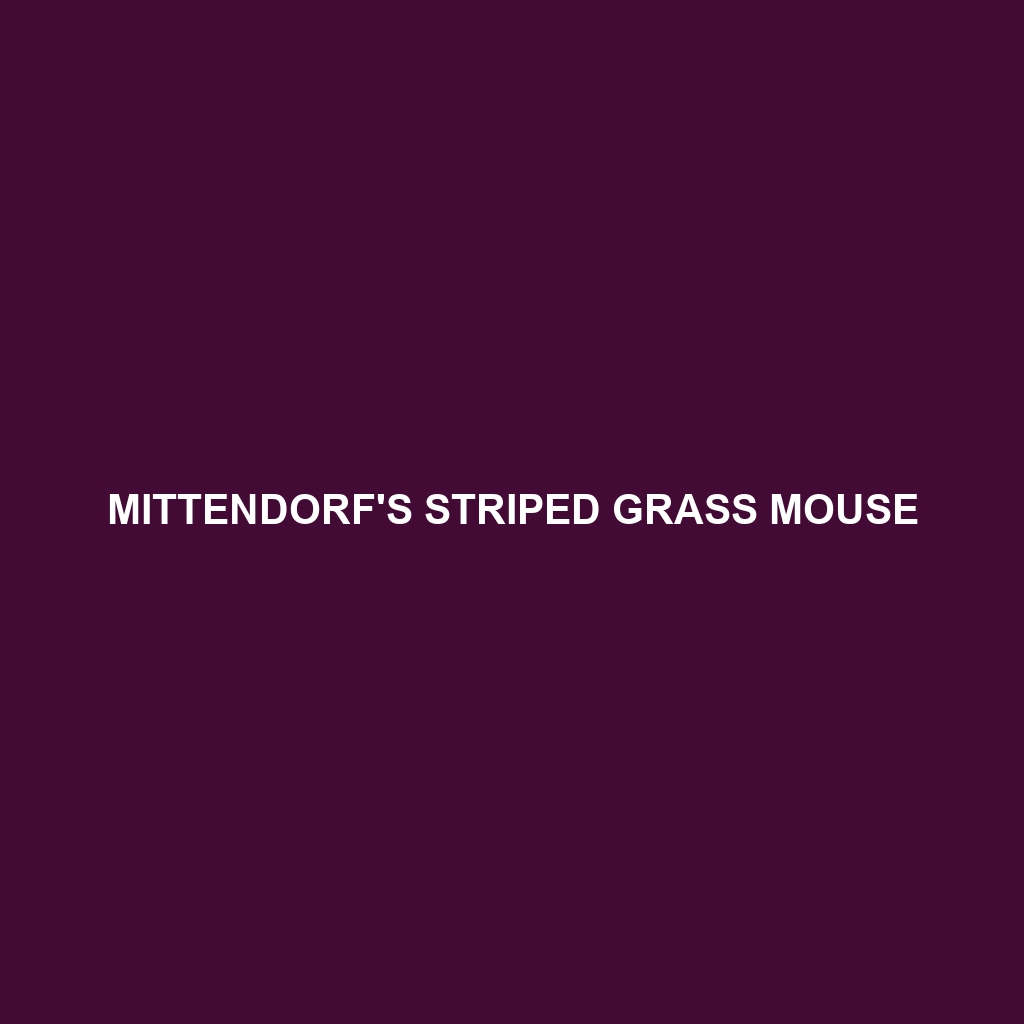Mittendorf’s Striped Grass Mouse
Common Name: Mittendorf’s Striped Grass Mouse
Scientific Name: Rhabdomys dilectus
Habitat
The Mittendorf’s Striped Grass Mouse primarily inhabits the grasslands and savannas of southern Africa, specifically in regions such as South Africa, Namibia, and Botswana. These mice favor areas with dense grasses and low shrub cover, providing them with shelter and foraging opportunities. Their habitat is often characterized by sandy soil and a warm climate.
Physical Characteristics
This small rodent typically measures between 10 to 13 centimeters in body length, with a tail that can be slightly longer than its body. The Mittendorf’s Striped Grass Mouse boasts a distinctive appearance, featuring a light brown or grayish coat adorned with dark stripes running along its back. Its large eyes and rounded ears are notable, providing excellent night vision and hearing, which are advantageous for foraging and evading predators.
Behavior
Mittendorf’s Striped Grass Mouse is known for its agile movements and burrowing habits. These mice are primarily nocturnal, emerging during the night to forage for food. They are social animals, often found in small family groups. During the day, they retreat into their burrows to escape the heat of the sun. Additionally, they communicate with each other through a series of chirps and squeaks.
Diet
The diet of the Mittendorf’s Striped Grass Mouse consists mainly of seeds, grains, and various plant materials. They are often observed foraging on the ground, collecting food to store in their burrows for later consumption. Their feeding habits are vital for seed dispersal and the overall health of their grassland ecosystem.
Reproduction
Mittendorf’s Striped Grass Mouse breeds throughout the year, with peak breeding seasons occurring in spring and summer. Females typically give birth to litters of 4 to 6 pups after a gestation period of about 3 weeks. The young are born blind and hairless but grow quickly, becoming independent at around 3 weeks of age. Parental care is primarily provided by the female, although males may help protect the nest.
Conservation Status
The conservation status of Mittendorf’s Striped Grass Mouse is currently classified as Least Concern on the IUCN Red List. However, habitat loss due to agricultural expansion and land development poses potential long-term threats to their populations.
Interesting Facts
One fascinating aspect of the Mittendorf’s Striped Grass Mouse is its ability to adapt to various environments within its range, showcasing remarkable resilience. Additionally, these mice are known to store food in underground caches, which helps ensure their survival during food shortages.
Role in Ecosystem
As a herbivorous species, the Mittendorf’s Striped Grass Mouse plays a crucial role in its ecosystem by contributing to seed dispersal and promoting plant growth. Their burrowing activities aerate the soil, benefiting other organisms as well. Furthermore, they serve as a food source for a variety of predators, maintaining the balance of the grassland food web.
